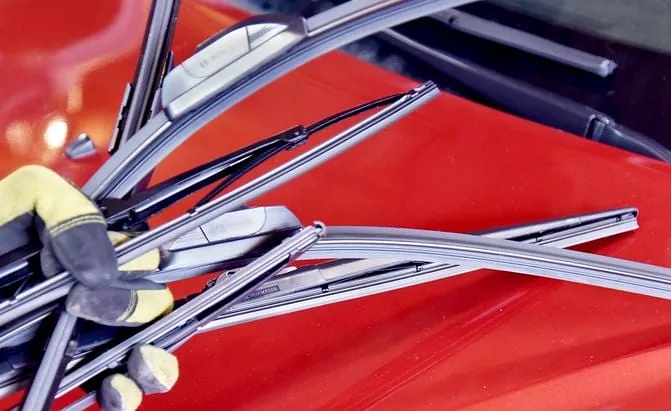In the ever-evolving landscape of automotive technology, one might not immediately think of wiper blades as a hotbed of innovation. However, with the integration of nanotechnology, these seemingly mundane components have undergone a remarkable transformation. Nanotechnology, the manipulation of materials at the molecular or atomic level, has found a crucial role in enhancing the performance and durability of modern wiper blades. This blog explores the fascinating ways in which nanotechnology has become a driving force behind the evolution of wiper blade technology.
Key Takeaways:
Nanotechnology is revolutionizing wiper blade design, introducing microscopic enhancements that optimize performance. These advancements translate to improved contact with the windshield, ensuring superior visibility and reliability in diverse weather conditions. Experience the future of clarity and precision in every drive with modern wiper blades infused with nanotech innovation.
Precision Engineering:
One of the key contributions of nanotechnology to wiper blades lies in precision engineering. Traditional wiper blades were often hindered by inconsistencies in the rubber or silicone materials, leading to uneven wiping and reduced visibility. Nanomaterials allow for the creation of wiper blades with unparalleled precision. By manipulating materials at the nanoscale, manufacturers can achieve a level of uniformity that ensures smooth and effective wiping across the entire windshield.
Improved Durability:
Nanotechnology has revolutionized the durability of wiper blades. The inherent strength and resilience of nanomaterials, such as nanoparticles of carbon or graphene, make wiper blades more resistant to wear and tear. This results in a longer lifespan for the blades, reducing the frequency of replacements and ultimately saving consumers money. Nanotechnology’s ability to enhance the structural integrity of wiper blades is a game-changer in the realm of automotive maintenance.
Enhanced Water Repellency:
Clear visibility during adverse weather conditions is crucial for driver safety. Nanotechnology has enabled the development of wiper blades with enhanced water-repellent properties. Nano-sized hydrophobic coatings applied to the blades create a superhydrophobic surface, causing water to bead up and roll off more efficiently. This feature not only improves visibility during rain but also reduces the reliance on wiper speed, contributing to a quieter and more energy-efficient driving experience.
Resistance to Environmental Elements:
Nanotechnology has equipped modern wiper blades with better resistance to environmental elements. UV rays, extreme temperatures, and pollutants can degrade traditional wiper blades over time. Nanomaterials, however, offer a higher level of protection against these environmental factors, ensuring that wiper blades maintain their performance and appearance over an extended period.
Smart Wiper Systems:
The integration of nanotechnology has paved the way for smart wiper systems. Nanosensors embedded in wiper blades can detect environmental conditions, such as rain intensity and temperature. This information is then processed by onboard computer systems to adjust the wiper speed and pressure accordingly. This not only improves the efficiency of the wiper blades but also contributes to the overall safety and comfort of the driver.
Reduced Friction and Noise:
Nanotechnology has played a pivotal role in minimizing friction between wiper blades and the windshield. By employing nanocoatings with low friction properties, the blades glide smoothly across the glass surface. This not only reduces wear on the blades but also contributes to a quieter operation. The reduction in friction ensures that the wiper blades operate more efficiently, translating to a quieter and less abrasive driving experience.
Anti-Icing Capabilities:
In colder climates, the formation of ice on wiper blades can impede their functionality. Nanotechnology has addressed this issue by introducing anti-icing properties to wiper blades. Nanostructured materials, such as special coatings or additives, prevent the accumulation of ice on the blades, allowing them to maintain optimal flexibility and ensuring reliable performance even in freezing conditions. This is a significant improvement in ensuring driver safety during winter months.
Customized Surface Adaptation:
Nanotechnology enables the customization of wiper blade surfaces to adapt to specific driving conditions. For example, nanomaterials can be engineered to repel not only water but also other debris such as insects, dust, and pollen. This tailored approach ensures that wiper blades can effectively clear various types of contaminants, providing a clear line of sight for the driver in diverse environments.
Environmentally Friendly Manufacturing:
The manufacturing process of traditional wiper blades often involves the use of chemicals and materials that can be harmful to the environment. Nanotechnology offers a more sustainable approach by allowing manufacturers to use fewer resources and produce less waste during the production of wiper blades. This shift towards environmentally friendly practices aligns with the automotive industry’s broader commitment to reducing its ecological footprint.
Integration with Vehicle Connectivity:
With the rise of connected vehicles, nanotechnology has facilitated the integration of wiper blades into the broader network of a vehicle’s electronic systems. Smart wiper blades can now communicate with other onboard sensors, such as those monitoring rain sensors or navigation systems. This integration allows for a more synchronized response to changing weather conditions, providing a seamless and automated experience for the driver.
Conclusion:
As we witness the ongoing transformation of the automotive industry, it’s clear that even seemingly ordinary components like wiper blades are not exempt from innovation. The role of nanotechnology in modern wiper blades goes beyond mere functionality; it enhances precision, durability, and adaptability to environmental conditions. Drivers can now experience safer and more comfortable journeys, thanks to the microscopic advancements that have reshaped the humble wiper blade into a sophisticated piece of automotive technology. The integration of nanotechnology into wiper blades is a testament to the industry’s commitment to constant improvement, ensuring that even the smallest components contribute to the overall advancement of vehicle performance and safety.
